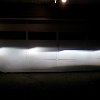- Joined
- January 26, 2004
- Messages
- 6,113
- Reaction score
- 22
- City, State
- Mechanicsville, Virginia
- Year, Model & Trim Level
- 2004 Acura TL

Fiber Optics
It has been brought to my attention recently that fiber optics is the new way for automotive wiring. A few technicians at my work have been to a few classes regarding it and some of the information on it. Fiber Optics is using "light" instead of normal non-visible current. Light is sent through a delivery fiber and reflects off the microcantilever. The reflected light is then sent through a collection fiber to a photon detector. The new, fiber-optic based sensors will be energy efficient, inexpensive, accurate, and immune to eltromagnetic interference - qualities that will ultimately improve the performance and efficiency of power electronic inverters by enabling very precise switching. Obviously, most fiber optic technology is being used in the new hybrid vehicles (some). BMW, Lexus, and all the lead manufacturers in the automotive world are currently using fiber-optics.
Benefits:
-Reduced weight and volume
-Fast, accurate measuremets
-Cheaper to manufacture and lower life-cycle costs through better long term operation.
-Functions in the harsh enviroment of an automobile; high temperature operational capabilities.
-Not affected by electromagnetic or radio frequency interference.
There are, however, disadvantages to using fiber optics. Splicing fiber cables requires skills not yet learned by many professionals. Fiber cables are also nonconductive. So, if an electrical communication link is needed, then an additional conducting member will need to be added to the total cable configuration. Optical fibers are made from glass; which in turn will decay when exposed to water over a long period of time. Water breaks down the glass and will eventually cause disintegration. Despite the cost, fiber does not last forever. One other disadvantage is that if the wire does become useless - you will (right now) have to replace to whole wire from end to end; which can be a long and intensive job.

I am not exactly "all knowing" in this technology, so if anyone has anything else to add; please do so. I would be interested in learning anything new.
-Drew










